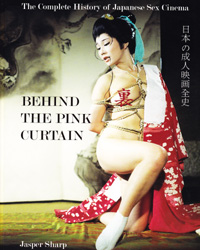The Complete History of Japanese Sex Cinema – Behind the Pink Curtain
If you have been around for any length of time in Japan, sooner or later you will stumble over that particular Japanese sex film genre called pinku eiga or the pink film.
Pink movies are softcore sex productions generally shot on 35mm celluloid and made for theatrical screenings. They always feature plenty of boobs and butts but no genitals at all, the public display of the latter still being prohibited in Japan. However, the films do tell actual stories… the directors working in the genre have had all the freedom to tell any weird tale they wanted as long as they stayed within their budgets and showed the required amount of skin on screen.
Cheaply produced, they closely mirrored the times in which they were made. Starting with tales of post-war hookers in their early days at the beginning of the 1960s, they went wild once directors like Wakamatsu Koji discovered revolutionary politics at the end of that turbulent decade and made sex films a podium for leftist-radical ideas. The 1980s saw a turn to torture, blood and guts while the current crop of young filmmakers relishes wicked fun.
Pink films have been a major training ground for a great number of directors who later became successful in mainstream cinema. Yojiro Takita, who won an Academy Award in 2009 for his film Departures, was one of them. But even more importantly than that, pink film did in fact save a large part of the Japanese film industry from imminent bankruptcy in the 1970s.
Though various retrospectives of influential works have been screened at international film festivals, the genre as such is still often viewed with contempt by many Japanese and international critics. This shouldn’t come as a surprise — it needs a serious sifting through a glut of thousands of virtually assembly-line made productions to find the really interesting gems.
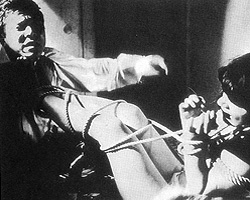
Jasper Sharp, a Briton who has lived for several years in Tokyo, took on that hard task and the result is his comprehensive study Behind the Pink Curtain: The Complete History of Japanese Sex Cinema.
“Complete” means here not that Sharp tried to cover all films ever made but that he presents in great detail all the major and plenty of minor developments within the genre, unfolding quite a raucous, fascinating picture of a still largely unknown cinema.
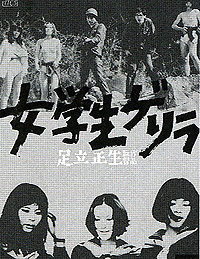
Sharp goes to great lengths to place the films directly into the social contexts they grew out of, describing the relevant cultural/political situations in vivid colors and thereby providing in a way a history of post-war Japan through the lens of porn.
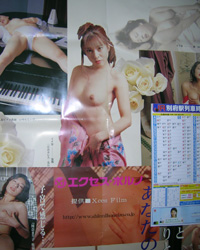
The student riots and counterculture of the 1960s and the terrorists of the Japanese Red Army Faction and United Red Army, for example, play a big part in the book. There were pink movie directors like Wakamatsu Koji who were closely related to those events… and there is one director, Adachi Masao, who after years of making / scripting counter-culture sex movies in collaboration with Wakamatsu joined a Palestinian guerilla group and ended up for more than 20 years in the Lebanon, never knowing if he would shoulder a camera or a gun on any given day. He ended up in prison in Beirut eventually, was extradited to Japan, spent some more time in prison here and is now making movies again.
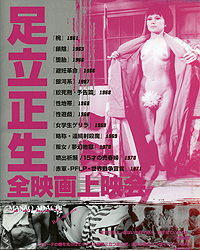
Wakamatsu and Adachi both receive their own chapters in the book and they are not limited to their input into sex-movie making they cover their whole colorful, bizarre yet influential careers.
Other director profiles include Sato Hisayasu who turned pink movies into media-obsessed tales of video-lit, psychotropic, horror slaughterhouses in the early 1980s, Sano Kazuhiro who brought punk underground aesthetics to pink, and Zeze Takahisa, who established himself as an artist auteur among international festival audiences with films like Tokyo X Erotica 2001).
Sure, an incredible amount of painstaking research went into the book to uncover all those stories, films, and biographies and their relations to both the world at large and to the politics of the bookkeepers back at the pink film company offices. And yet, it’s an easy, very enjoyable read. Don’t read it on the subway — you might miss your station being hooked to the book.
As you would expect from a work on sex movies, Pink Curtain features a generous amount of film stills, depicting plenty of the hotter moments in the respective flicks.
If you finally think that you got to see some of those movies Sharp writes about, the book ends with a large index which lists both the English and the Japanese names of the films (the latter in their original script) as well as the DVD sources for each film – provided the film ever made it to digital.
In short, Pink Curtain is the definite, authoritative book on pink cinema in the English language and it will certainly remain the standard work on the subject for years to come.
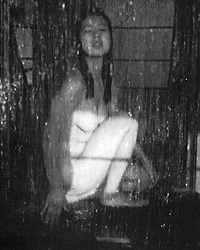
Further Reading
Cinema of Actuality: Japanese Avant-Garde Filmmaking in the Season of Image Politics
Politics, Porn and Protest: Japanese Avant-Garde Cinema in the 1960s and 1970s
A New History of Japanese Cinema: A Century of Narrative Film
Eros Plus Massacre: An Introduction to the Japanese New Wave Cinema
